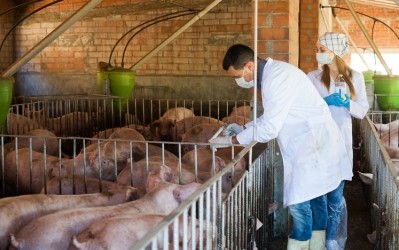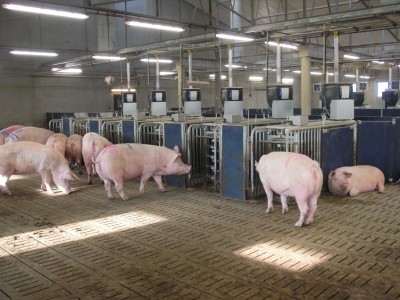US sales of antibiotics for farm animals fall for first time since 2009: FDA

The US Food and Drug Administration (FDA) report covers sales from 2015 to 2016.
It said, in 2016, sales and distribution of medically important antibiotics for food production fell 14%.
This year’s report, however, does not reflect the changes introduced with the Veterinary Feed Directive or guidance for industry #213, said the FDA. That guidance ended the use of some medically important antimicrobials for growth promotion or feed efficiency.
Medically important antimicrobials are a class of drugs that are used to treat diseases in humans,.
Total sales amounted to about 14m kg in 2016, the agency said. Although the amount of medically important antimicrobials used in feed decreased from 74% to 72%, it remains the primary method of administration.
In a statement provided to us, Keep Antibiotics Working said it applauded the decrease in sales reported, and called on producers working with beef and swine production to continue efforts to reduce antibiotic feeding or use.
“Keep Antibiotics Working is happy to see that the rise of sales may have finally topped out, and we hope that there will be even more reductions as the implementation of the FDA’s Guidance for Industry 213 goes into effect in 2017,” said Steven Roach, Keep Antibiotics Working senior analyst and Food Animal Concerns Trust (FACT) food safety program director.
“The species data confirm that more work needs to be done particularly in beef and pork.”
Report details
In evaluating the data provided, species-specific sales estimates should not be compared directly because of differences generated by population size, animal weight and lifespan and drug metabolism said the FDA. Sales and distribution information also does not mean that all the products sold were used.
Breaking down the total amount of antimicrobials approved for use in production species, it was reported that in 2016 about 43% of medically important antimicrobials were intended for use in cattle, the agency said. About 37% were intended for use in swine.
In poultry production, about 9% of medically important antimicrobials sold were focused on use in turkey and about 6% were intended for use in chickens, the agency said. About 4% of the products sold were either sold for use in other animals or the intended species was not known.
“In 2016, domestic sales and distribution of medically important antimicrobials accounted for 60% of the domestic sales of all antimicrobials approved for use in food-producing animals,” the agency said. “Tetracyclines accounted for 70% of these sales, penicillins for 10%, macrolides for 7%, sulfas for 4%, aminoglycosides for 4%, lincosamides for 2%, and cephalosporins and fluoroquinolones each for less than 1%.”
For several types of medically important antimicrobials, the majority of sales were intended for use in cattle, the agency said. This includes cephalosporins at 80%, sulfas at 60% and aminoglycosides at 51%, while only about 49% of tetracyclines sales were aimed at cattle.
For swine the major types of antimicrobials sold included lincosamides and macrolides, the agency said. About 63% of domestic sales of penicillins were planned for use in turkey.
Among the types of antimicrobials that saw sales decline from 2015 to 2016, tetracycline sales had the largest sales by volume, the agency said. Domestic sales in 2016 were 5,866,588kg – a decrease of 15%.
Similarly, sales of cephalosporin by volume fell 4% and lincosamide sales volume had the largest percentage decrease dropping 22% from 2015 to 2016, the agency said. “The percentage of domestic sales and distribution of medically important antimicrobials approved for use in food-producing animals that are sold over-the-counter (OTC) decreased from 97% to 96% from 2015 through 2016,” it added.
“The percentage of domestic sales and distribution of medically important antimicrobials approved for use in food-producing animals that have an approved indication for production use decreased from 71% to 69% from 2015 through 2016,” the agency said. “This number does not represent sales attributable to products used solely for production indications because most of these products are also approved for therapeutic indications and FDA does not have indication-specific sales and distribution data.”
Of the total sales for antimicrobials, about 40% were not medically important, the agency said. The majority of that amount were ionophores.
“Of the domestic sales and distribution of antimicrobials that are not medically important, it is estimated that 55% of sales were intended for use in cattle, 30% intended for use in chickens, 8% intended for use in swine, 7% intended for use in turkeys, and 0% intended for use in other species/unknown,” the agency said.














